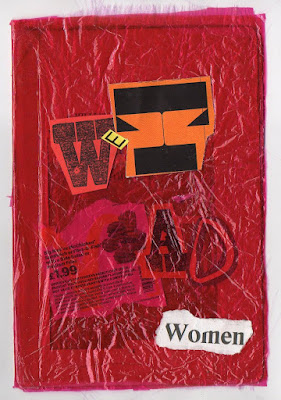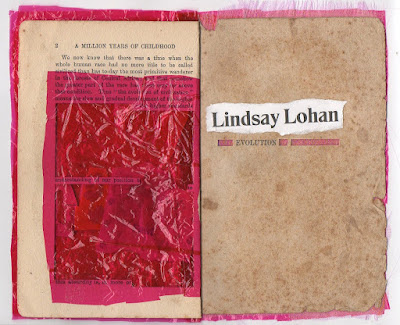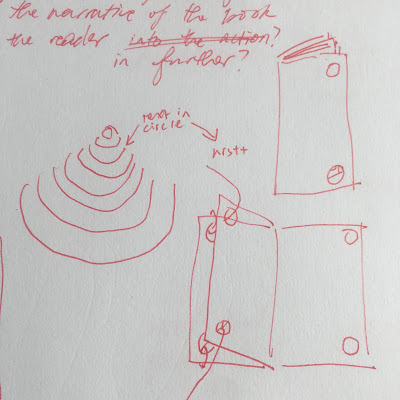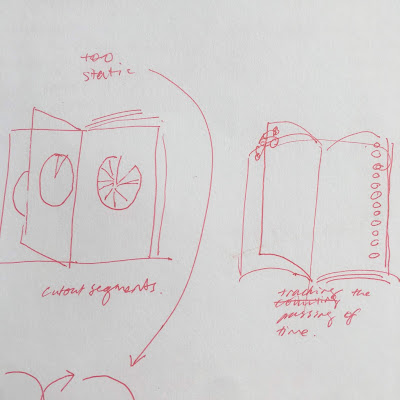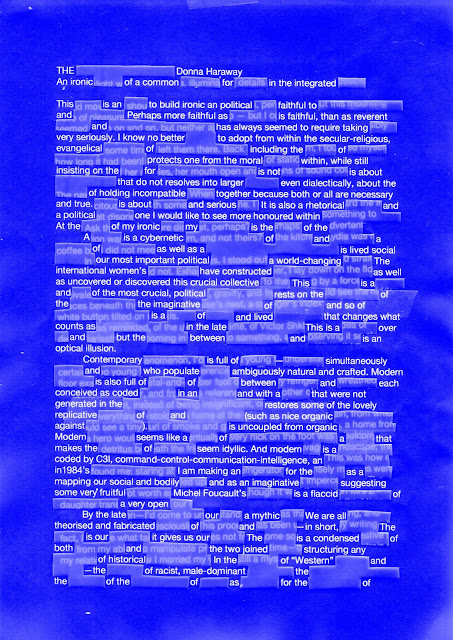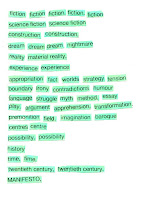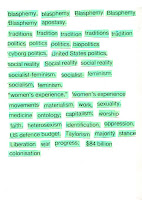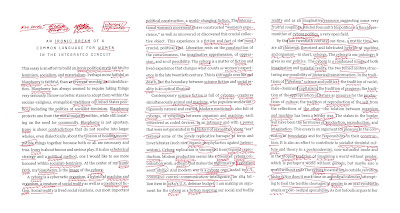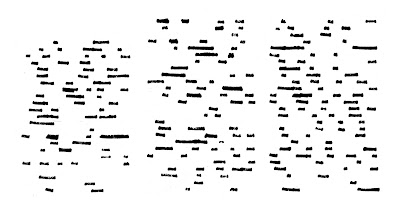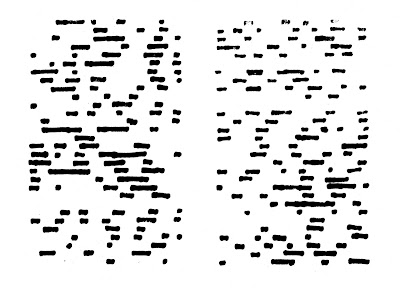Aim
Book Sculptures, Brief 2: Explore how altering the form or materiality of the book can be meaningful.
How might I make a physical book that typographically "sings" in order to represent women's / witches' / feminists voices and attitudes?
Precedents / context
Working off the same piece of text as my last experiment, I wanted to make something that was more explicit in its message. I am still thinking about the different directions mentioned at the end of that experiment, but this seemed like a much more straight-forward, quick exploration. Type opens up a whole new set of strategies and methods.
"Why witches? Because witches can sing. Can I hear this singing? It is the sound of another voice. They tried to make us believe that other women did not know how to speak or write; that they were stutterers or mutes. That is because they tried to make women speak straight-forwardly, logically, geometrically, in strict conformity. in reality, they croon lullabies, they howl, they gasp, they babble, they shout, they sign. They are silent and even their silence can be heard." (Gauthier, 1980, as cited in Goldenberg, 2004)
Process / Methods
- I started gathering books, bits of paper and printed matter that I was happy to cut up.
- Leafed through and cut out interesting pages/words/letters with an interesting shape or materiality to it.
- Stuck them onto each other, shuffled everything around until it started to look/say something interesting
- You can start to see the compositions coming together. Visually I was struggling with colours, and everything was quite clashy.
- Bringing the cellophane was really fun and helped everything else come together. even transferred some compositions (the 'mad' below, for example) onto the cellophane so that the words could also work with transparency
- Cut out paragraphs from this very old book about the evolution of civilisation, lovely aged paper.
- What could go into the negative space? Also glued in a cellophane window for the text boxes.
- Found some pink fabric, though it would add a nice materiality and softness against the cellophane.
- Stuck pages together with double-sided tape along the inner margin
Scans
Reflection on Action
- Throughly enjoyed this experiment. It felt really explorative, and I think it fulfils the aim. It's playful and uses type to create humour. It also draws from feminist punk aesthetics — the cut up type and juxtaposition of style.
- The cellophane was a real surprise for me! I think transparent element works really well, the cover I made thicker by glueing together two sheets, and of course, the eye-watering pink! It's quite an aggressive pink; visually and sonically, which suits the tone of Gauthier's writing.
- The title of the book I suppose, 'Wet, Mad Women'. I just cobbled together with found type but I think it's quite funny that cellophane is waterproof, and didn't even make that connection until after.
- Reflecting on this, and my last experiment, I can see how I'm building my design and research agendas side-by-side, and through the making I'm finding methods and creating outcomes that I didn't expect or could have imagined.
Reflection for Action
The book feels like a good length for a early experiment, but I wonder where it might go? What sort of story would it continue to tell? I could even try to typeset the text with found typography, but that seems tedious and perhaps a predictable.
I love where this experiment has gone, but I think I will try to start pushing the form into a more generative / instructional / possibly coded space. This feels exciting to me, and like there's more scope to explore these ideas further.
References
Goldenberg, N. R., (2004), Witches and words, Feminist Theology, volume12(2), 203-211. https://doi.org/10.1177/096673500401200207
